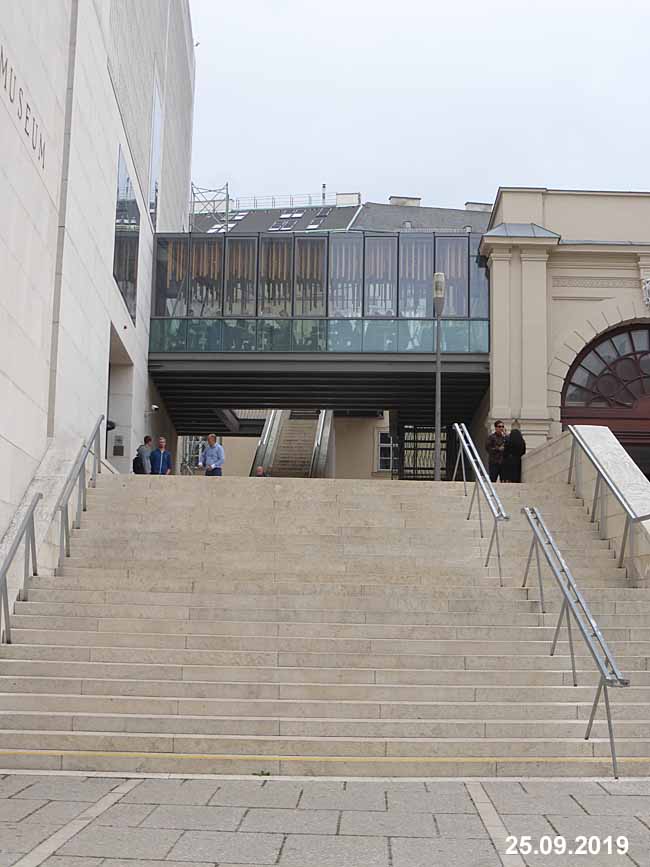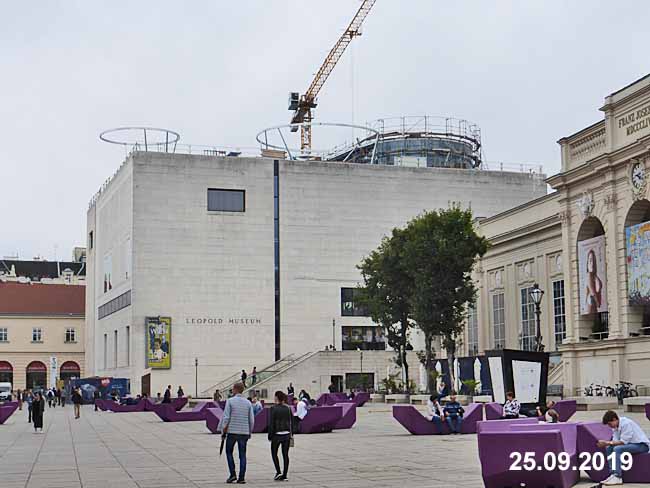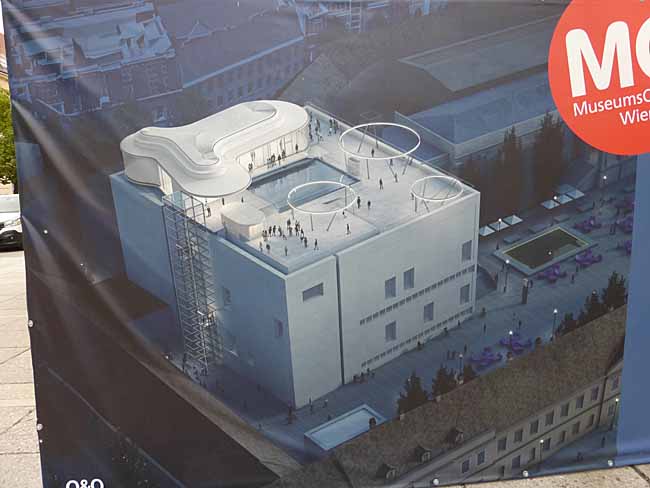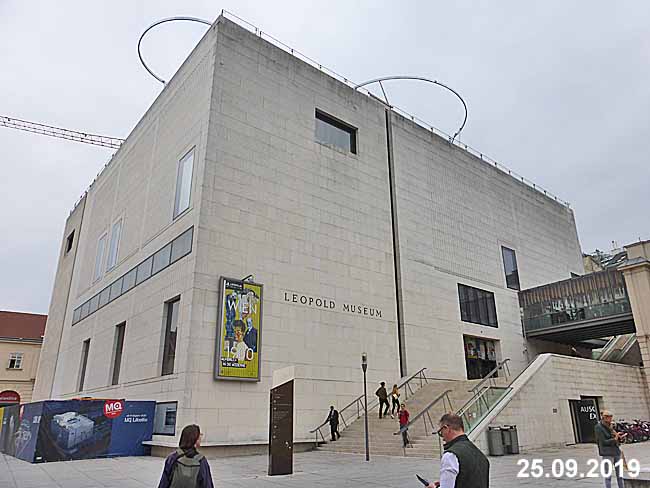| Architect |
Laurids Ortner and Manfred Ortner |
|
Date Built |
2018 |
| Location |
Museums
Quartier |
| Description |
|
Vienna's
Leopold Museum is home to over 6,000
artworks described as, "... one of
the world’s most important collections
of Austrian art, focusing on the second
half of the nineteenth century and
subsequent Modernism. .... The museum’s
holdings are based on the collecting
activities of Rudolf and Elisabeth
Leopold, two ophthalmologists who as
superior connoisseurs amassed a unique
collection over the course of five
decades, beginning in the 1950s. Their
extraordinary passion for art enabled
them to collect artists such as Egon
Schiele and Gustav Klimt – whose works,
up until the 1960s, were considered
taboo and so could be acquired for
comparatively modest sums. " The architects describe the building as, "...A block clad on all sides with white mussel limestone, 24 metres high and embedded 13 metres in the ground. From a distance the single windows give the impression of a private house. Only when closer to the building do you grasp that they are actually oversized in format and measure 2.2 by 3.8 metres. In angled sunlight the block, initially apparently smooth, reveals differently structured surfaces that give the stony mass a curious transparency, the rooms behind seem to shimmer through the facade."  When we visited in September of 2019, there was construction underway on the roof. The museum explains that, "... By the spring of 2020, the rooftop of the Leopold Museum will feature a new attraction: the MQ Libelle, affording breathtaking views over the heart of Vienna. The glass building, designed by Laurids Ortner, will encompass a 600-square meter event space. Eva Schlegel, a 1995 participant and 2011 commissioner of the Austrian contribution to the Venice Biennale, will design the glass façade, and Brigitte Kowanz, awarded the Grand Austrian State Prize for Fine Arts in 2009, will create a light installation. The MQ Libelle will be accessible to the public via outdoor elevators and, like the courtyards of the MuseumsQuartier Vienna, will invite visitors to linger without the pressure of having to consume anything. In addition, the multifunctional event space will be available for art and cultural projects as well as for rentals."  |
|
|
Leopold
Museum, Vienna, Austria
 |
